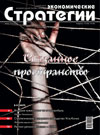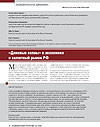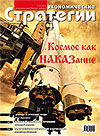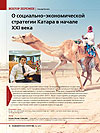“Long Waves” in the Economy and the RF Currency Market
The article dwells on actual problems — increase in the volatility of the ruble exchange rate and its depreciation in 2018. At the same time, it is assumed that dynamics of the ruble exchange rate in general reflects the underlying economic processes (including abroad). Before the economic crisis that began in 2008, the ruble exchange rate for many years was mainly strengthening, and its volatility was relatively low. The situation has changed because the economies of a number of countries (in particular, Russia) have entered into a long, difficult period. So, for about a decade, the Russian economy has been showing slow growth. At the same time, the ruble exchange rate tends to depreciate. This allows the authors to assume that dynamics of the ruble exchange rate, which passed from a long upward to a downward stage about ten years ago, may be associated with a similar transition of the economy of Russia and some other countries to a downward stage (in N.D. Kondratieff terminology). The article analyzes a number of approaches to the problems of “long waves” in the economy and a conclusion is drawn up on the necessity to develop the RF monetary strategy (taking into account long-term macroeconomic processes).





